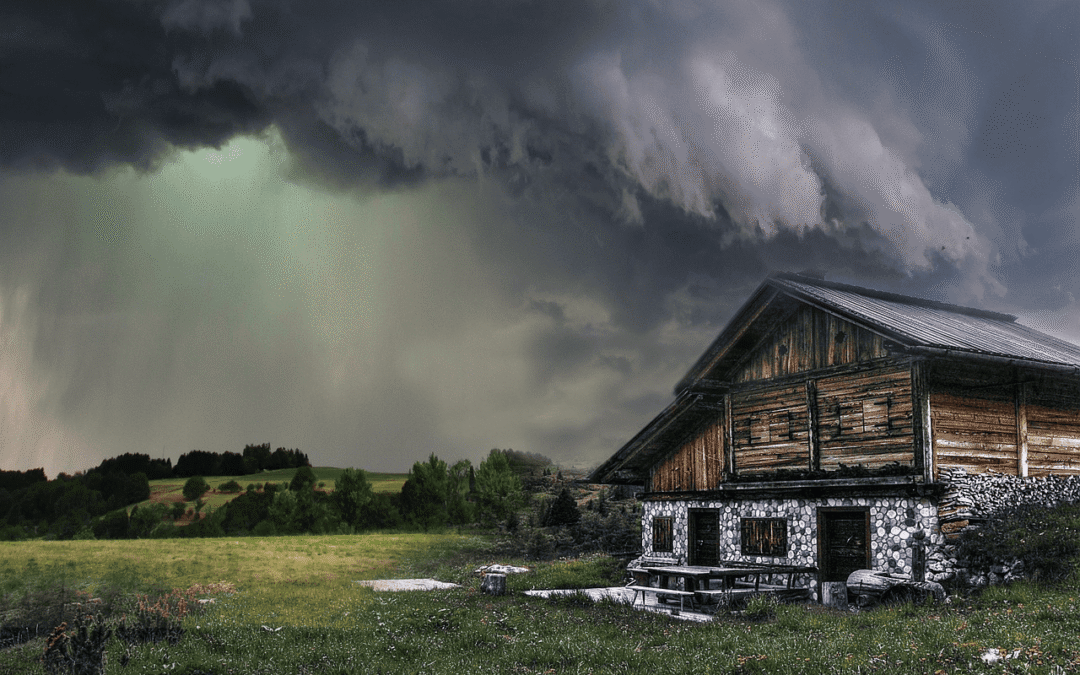If you’ve lived through even one hurricane season, you already know it’s nothing to take lightly. The Atlantic hurricane season runs from June through November, but don’t let that calendar fool you. Preparing your home early can make a world of difference when the winds start howling and the rain starts pouring. Whether you’re new to storm prep or seasoned, it’s always good to refresh your checklist. Here’s a practical guide to getting your home hurricane-ready without stress.
Storm shutters
One of the most effective ways to protect your home during a hurricane is by installing storm shutters. They are designed to withstand flying debris, high winds, and heavy rainfalls. Some types of storm shutters include:
- Accordion shutters: These are permanent, foldable shutters that you can quickly close and lock.
- Roll-down shutters: A pricier option, but excellent for convenience. You roll them down with a crank or motor.
- Colonial and Bahama shutters: These add a bit of aesthetic flair while offering solid protection.
- Plywood: This should be a last resort. If you’re in a pinch, properly installed plywood can work, but it’s best to plan ahead and invest in something more durable.
Build or rebuild your emergency kit.
An emergency kit is your family’s lifeline during and after the storm. A well-stocked kit means you’re not scrambling to find batteries or water when stores have already sold out. Essentials to include are:
- Water: A minimum of one gallon for one individual per day for three to seven days.
- Cash: ATMs and card readers might be down post-storm
- Non-perishable food: Energy bars, canned goods, peanut butters, crackers.
- Important documents: IDs, insurance papers, birth certificates, and other important documents stored in a waterproof bag
- Pet supplies: Food, leashes, medications, and your pets
Be sure to remember medications and a first aid kit, flashlights and extra batteries, and phone chargers or power banks. It’s also smart to pack a few comfort items like playing cards, books, or favorite blankets for kids. Hurricanes are stressful, and a little comfort can go a long way.
Structural checks
Your roof is one of the most vulnerable parts of your home during a hurricane. High winds can rip off shingles, peel up flashing, and leave your home exposed to water damage. Before hurricane season ramps up, schedule a professional roof inspection. Look for missing or loose shingles, clogged gutters, and weakened flashing.
If you’re in the Sunshine State, it’s worth calling in South Florida’s reliable roofing specialists. They know exactly what to look for and can help you reinforce your roof to withstand hurricane-force winds. Other things to check include:
- Gutters and downspouts: Clear them of debris so water can flow away from your home.
- Doors and windows: Check seals, caulking, and locks. Reinforce sliding glass doors with a security bar or pin.
- Garage doors: These can be weak spots; reinforce them with braces or hurricane kits.
- Soffits and vents: Make sure these are secured properly to prevent wind-driven rain from entering the attic.
Yard prep
Loose outdoor items can quickly become dangerous projectiles during a hurricane. Take a walk around your yard and make a note of anything that needs to be brought or tied down. Secure or store the following: patio furniture, garden tools, potted plants, grills and fire pits, decorative yard items, and garbage cans. Be sure to check your trees and trim any branches hanging over your roof or close to your power lines. If a tree looks diseased or unstable, it’s best to remove it altogether so a storm doesn’t do it for you.
Backup power
Power outages are almost guaranteed during a major storm, so consider your backup power options. A portable generator can keep your refrigerator, fans, and medical devices running. Just make sure to follow safety guidelines, never run a generator indoors, or near open windows. If you’re thinking long-term, solar panels with battery storage can offer sustainable backup power. They’re an investment, but one that could pay off big time, especially in hurricane-prone areas.
Review your insurance policy.
This one gets overlooked a lot, but it’s crucial. Go over your homeowner’s insurance before hurricane season hits. Make sure you understand coverage limits and deductibles. If you live in a flood-prone zone, you might need separate flood insurance; standard policies often don’t cover flood damage. Also, take pictures of your property and valuables. If you need to file a claim later, it helps to have documentation.
Endnote
With some early preparation and the right knowledge, you can keep your home and loved ones safe from dangerous storms like hurricanes. Check those storm shutters, stock your emergency kit, and don’t forget to give your roof a little care.

Recent Comments